The 9 Best Types of Tile—and Where to Use Them
From bathrooms to backsplashes, this tile guide has you covered


The sheer number of different tile options can be dizzying. Between kitchen and bathroom walls, flooring, and even ceilings, there's a near-endless variety of tiles to choose from at every price point. Ceramic and porcelain tile are popular choices, but you can also choose from materials such as glass, cement, slate, and marble. Where do you even begin? Let's walk through nine popular types of tile that homeowners of all stripes tend to opt for, and which rooms and projects they fit best.
1. Ceramic

The versatility and nearly infinite variety of styles of ceramic tiles make them a popular choice for homeowners of all tastes and budgets. Ceramic tiles come in a plethora of colors, designs, and sizes, with glazed and unglazed options depending on the desired look and functionality. Since they’re easy to clean, they can be installed in kitchens, bathrooms, and anywhere else that needs a pop of color or shine. Ceramic tile costs $12 to $45 per square foot for professional installation, or as little as $9.50 per square foot if you purchase the tiles and supplies yourself.
| Pros | Cons |
|---|---|
| Countless color and design options | Requires frequent maintenance |
| Affordable | Can feel cold to the touch |
| Easy to clean | Can crack easily |
Best for: Design-minded homeowners on a budget
2. Porcelain
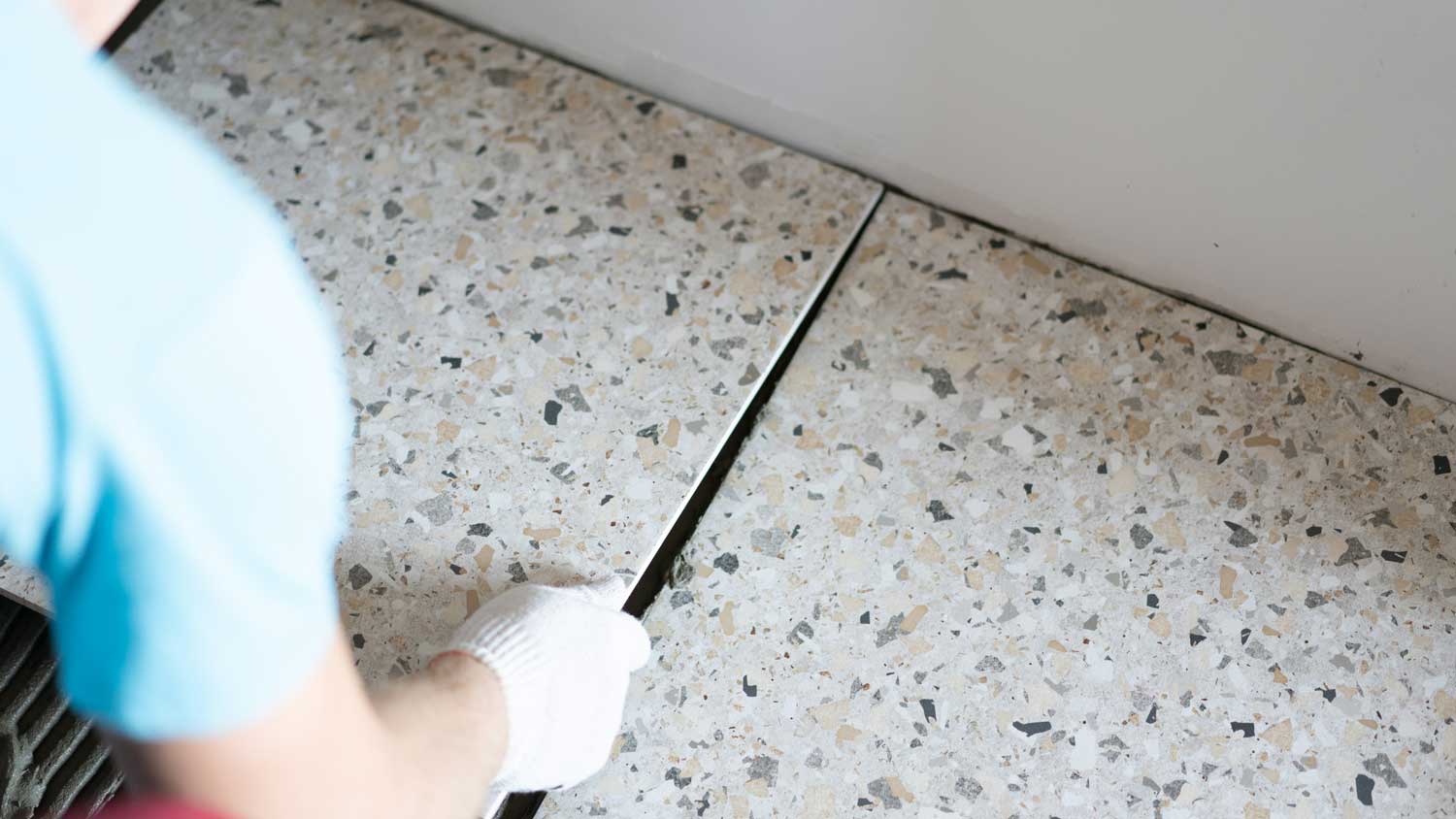
Porcelain is made by mixing fine clay with quartz and feldspar. Firing it at extremely high temperatures results in an incredibly hard and scratch-resistant surface that can also be made into beautiful art and interior design. When comparing ceramic versus porcelain tiles, you’ll find that porcelain can cost almost twice as much, but it’s also non-porous, water-resistant, and extremely durable. Porcelain tiles can even be installed outdoors because weather conditions won't cause them to tent, crack, or fade. Porcelain tiles come in many different thicknesses but are usually ½” thick, which can make installation difficult. They often emulate brick, wood, stone, and other natural textures.
| Pros | Cons |
|---|---|
| Incredibly durable | Heavy |
| Low-maintenance | Challenging to install |
| Water-resistant | More expensive than ceramic |
Best for: Outdoors and high-traffic areas
3. Terracotta
Terracotta means "baked earth" in Italian. It is a rustic and timeless type of tile that’s especially popular in the western United States, Mexico, and southern Europe. Terracotta tiles are made from soft clay that lasts a surprisingly long time after it is fired in a kiln, with its famous russet color formed in the firing process. Homeowners can even find handmade terracotta tiles. Terracotta tiles are so durable and versatile that they can be used in your entire home, from the roof to the floor. Keep in mind that they are very porous unless they are glazed.
| Pros | Cons |
|---|---|
| Extremely durable | Expensive in large quantities |
| Eco-friendly | Cracks are hard to repair |
| Versatile for indoor and outdoor use | Glazed tiles can be slippery |
Best for: Roofs, patios, and floors
4. Travertine
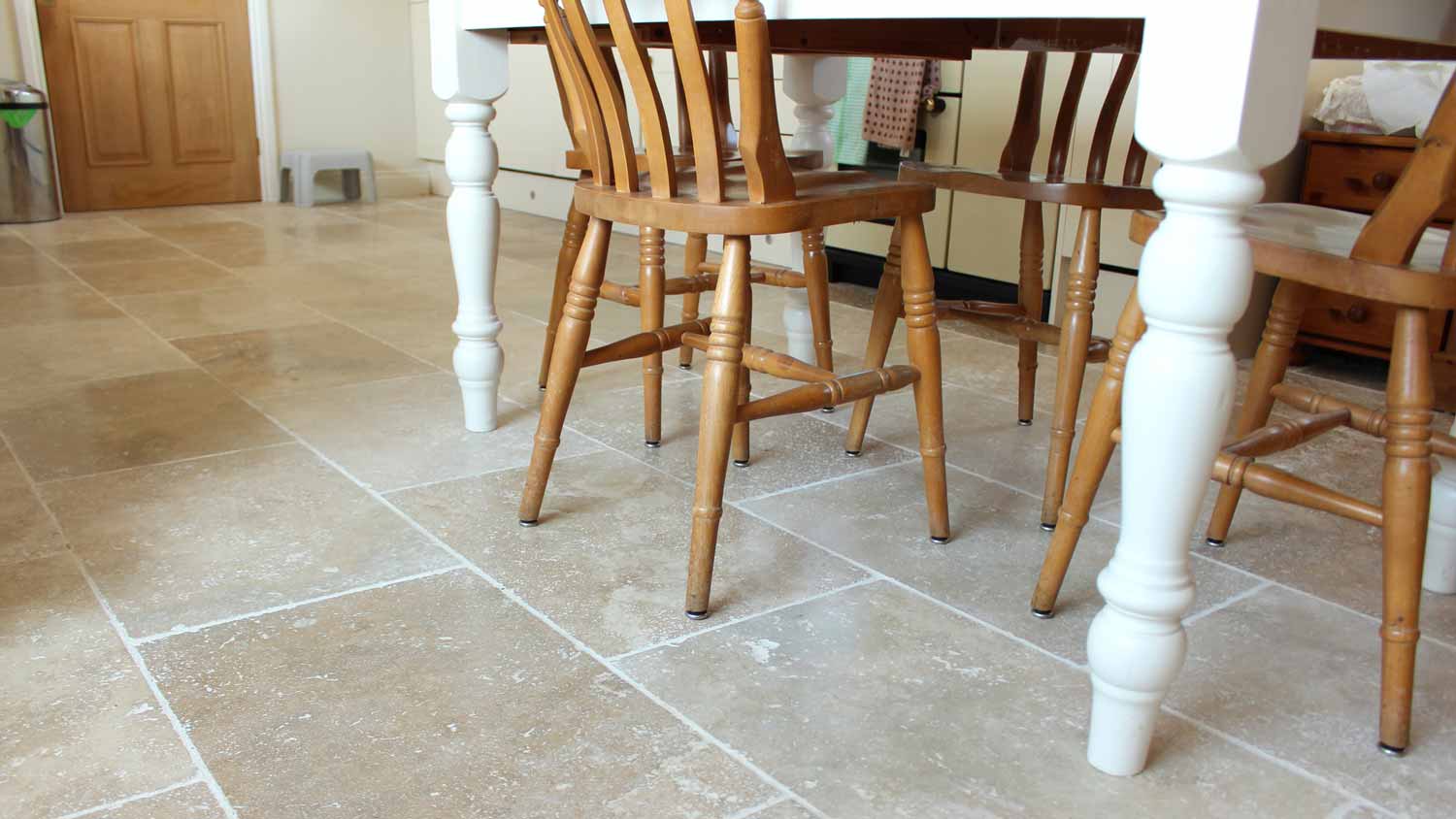
Travertine is a popular choice for homeowners who want to use natural stone but need to stick to a budget. Travertine tile costs as little as $5 per square foot, although higher-end options can cost as much as $30 per square foot. Travertine offers a variety of finishes, and no two tiles are the same, so they give your home a unique, natural aesthetic. While travertine can last 75 to 100 years, it’s susceptible to damage from acidic substances like vinegar and citrus juice, so you may not want it for your kitchen. Excessive amounts of water can also damage travertine, so it isn't the ideal material for a pool surround.
| Pros | Cons |
|---|---|
| Very affordable | High-maintenance |
| Natural look | May need resealing every 15 years |
| Long lifespan | Susceptible to water damage |
Best for: Adding a luxe natural look to a low-traffic area
5. Cement
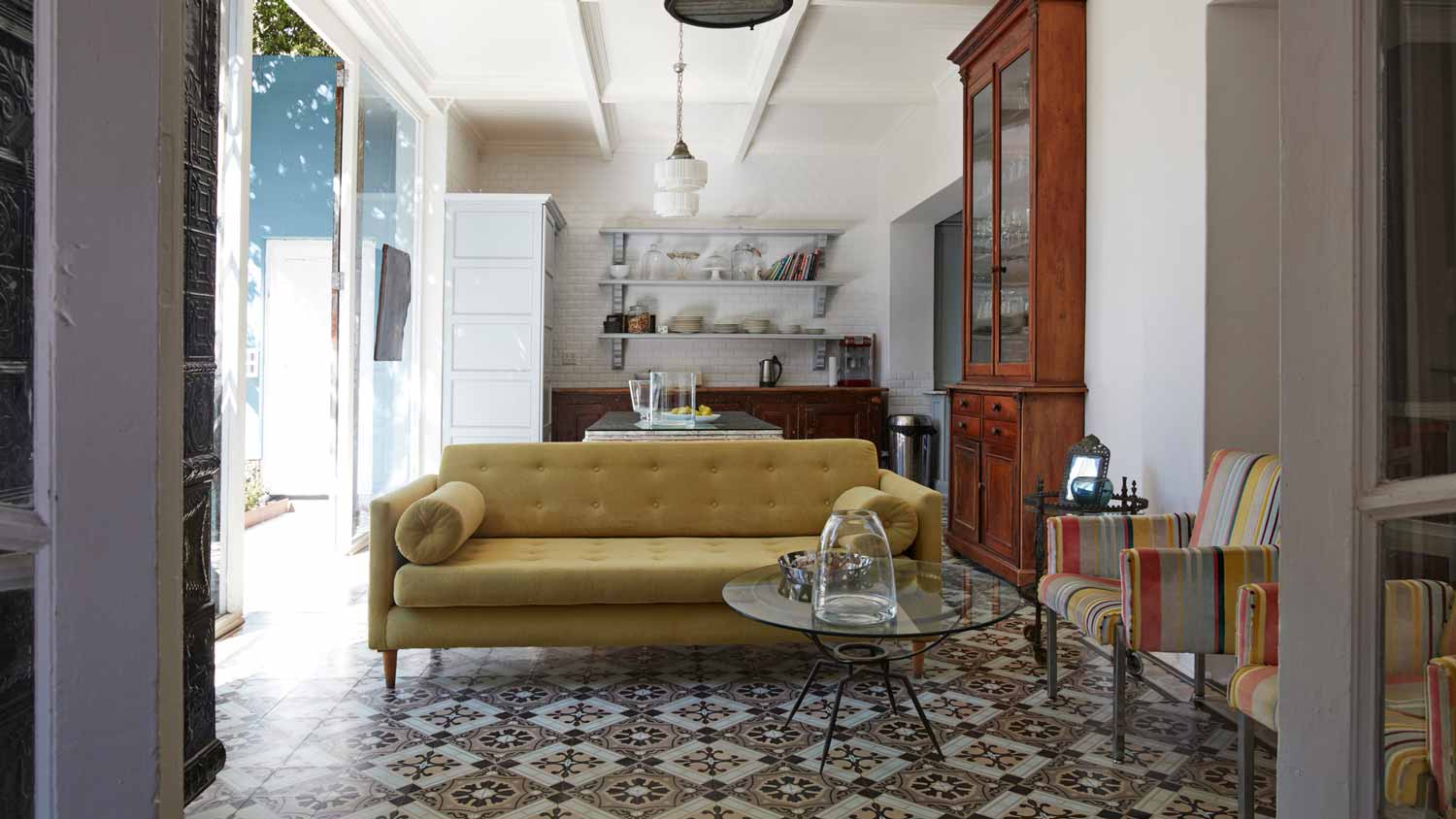
Cement tiles are a beloved relic of the Victorian era. Made of clay, they are also called encaustic tiles because of the designs burned into them or stamped then filled in with clay of a different color. Cement tiles still use the same geometric patterns their historical counterparts did, but more intricate designs are available today. Cement is incredibly porous, and this causes a unique patina to develop over time, making the beautiful patterns stand out even more. However, these tiles are very expensive to install and the most difficult to maintain of all types of tile. They must be resealed every month or their beauty quickly fades.
| Pros | Cons |
|---|---|
| Beautiful and unique aesthetic | Extremely expensive |
| Eco-friendly | Requires frequent maintenance |
| Suitable for indoor and outdoor use | Difficult to install |
Best for: Adding visual interest to areas like backsplashes
6. Glass
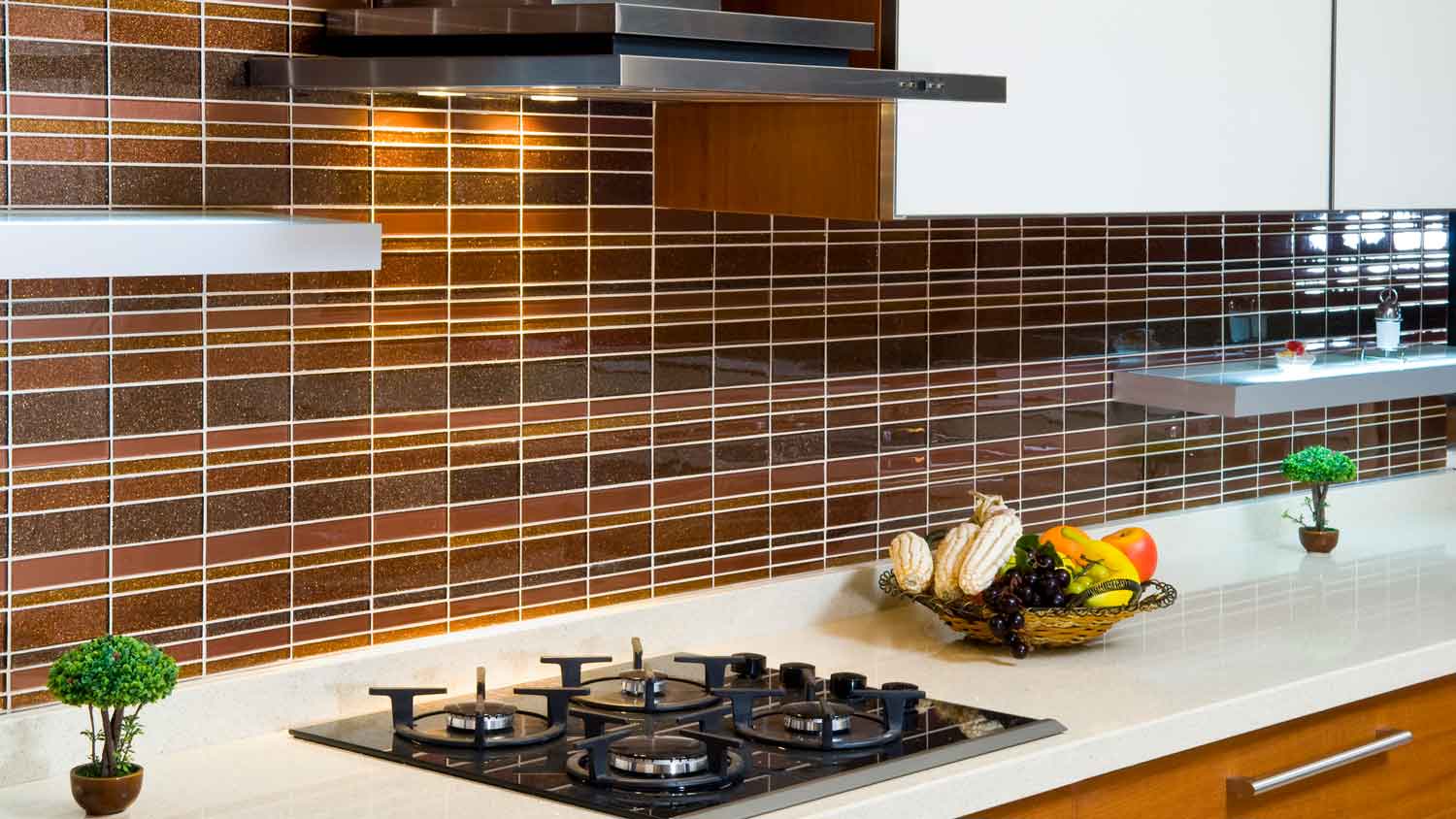
Glass has a reputation for being fragile, but glass tiles are actually surprisingly durable. Glass tiles reflect the light in a room and come in a variety of colors and patterns, providing both elegance and utility to an area. Their most popular use is kitchen and bathroom backsplashes, since glass is stain-resistant and cleans easily. Glass can handle flyaway toothpaste, cooking oils, and other substances used in daily life—even acidic ones like vinegar. However, you will likely need a local tile contractor to help you install your glass tiles, since it is extremely difficult to get a clean look thanks to the transparency of glass and opacity of adhesives. Glass is also prone to scratching and is not suitable for flooring.
| Pros | Cons |
|---|---|
| Stain-resistant and easy to clean | Challenging to install |
| Not damaged by acidic substances | Not suitable for floors |
| Reflects light in a room | More expensive |
Best for: Kitchen and bathroom backsplashes
7. Slate

Slate is a very strong natural stone that’s popular for floors and roofs. If your home uses radiant heat, slate helps conduct the warmth, making your floors feel toasty. But if you don't have radiant heat, slate floors can feel cold underfoot. While slate can create a uniquely beautiful aesthetic, it is also difficult to repair and replace tiles over time. Color-matching them between sealings and replacements gets harder, so you will want to keep leftover tiles from the original installation.
| Pros | Cons |
|---|---|
| Unique natural aesthetic | Expensive |
| Makes radiant heat effective | Difficult to repair and replace |
| Extremely durable | High-maintenance |
Best for: Flooring for homes with radiant heat
8. Mosaic
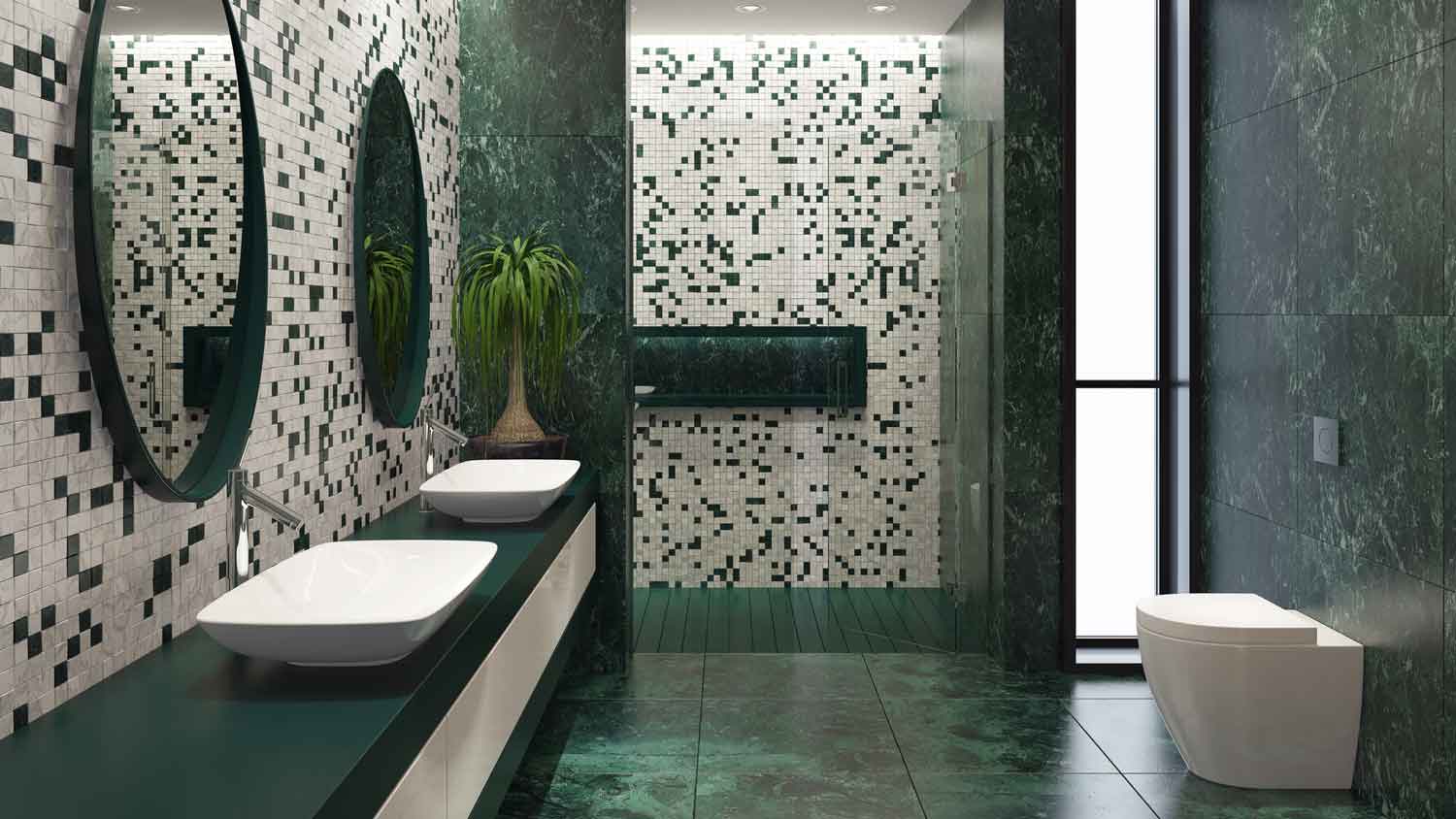
Mosaic tiles are a style rather than a specific type of material: It refers to small tile pieces that are arranged in patterns (sometimes very ones). Everything from ceramic to natural stone and even semi-precious gemstones can be used to make mosaic tiles. They are seen more as an aspirational luxury since they require so much elaborate craftsmanship, unlike your standard factory-made tiles. Despite their intricacy, mosaic tiles are surprisingly mold- and stain-resistant. Mosaic tile virtually always requires pro installation.
| Pros | Cons |
|---|---|
| Stunning visual appeal | Requires professional installation |
| Stain-resistant | Expensive |
| Easy to clean | Walls and subfloors must be pancake-flat |
Best for: Making a design statement
9. Marble
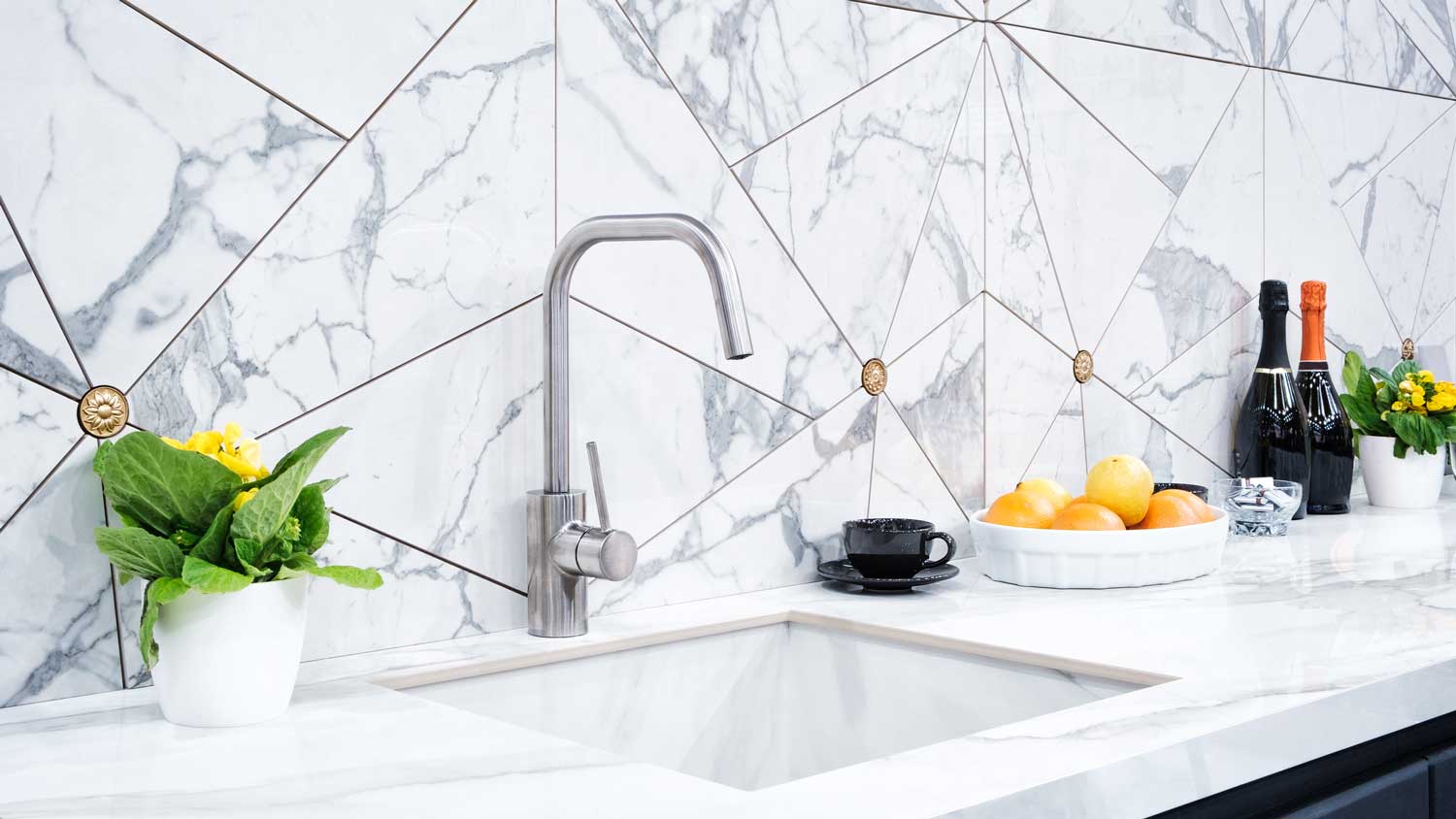
The texture and patterns of marble tile provide a timeless elegance that immediately elevates any room. Marble tiles are a popular choice for floors, but they can also be used in kitchen countertops, shower stalls, and backsplashes. Using a small amount as a decorative accent makes marble tile more accessible to homeowners, given that Grade A marble flooring costs $19 to $60 per square foot. Lower-quality marble with more imperfections can be more cheaply obtained, but this doesn’t negate the high maintenance of marble tiles.
| Pros | Cons |
|---|---|
| Timeless beauty | Expensive |
| Smooth surface | Prone to scratches and stains |
| All tiles are unique | Difficult to clean |
Best for: High-end homes
Frequently Asked Questions
Regardless of the material, basic square tiles will never go out of style. Neutral colors like white, grey, beige, and black will always be in demand in residential and commercial settings. Certain designs, like herringbone and hexagonal patterns, are considered timeless. Porcelain and porcelain-like tiles will also never go out of style.
Glass tiles are among the most difficult to install. This is because their transparency makes the adhesive visible, and any imperfections on the opposite side are also likely to be visible. Glass tiles also must be handled carefully during installation, as they are prone to scratching. For these reasons, glass tiles often require professional installation to get the most out of their beauty and unique look.















